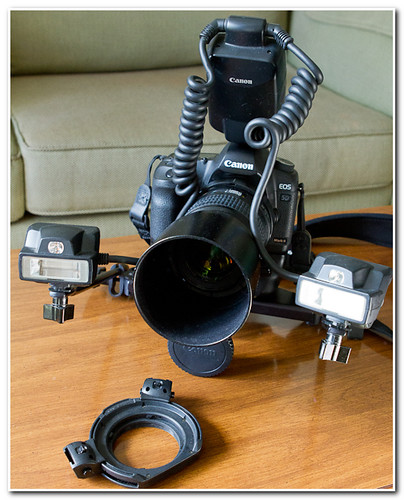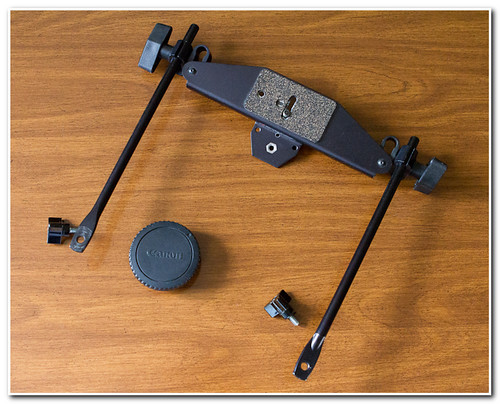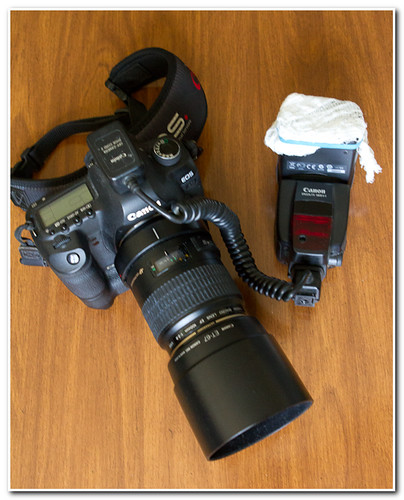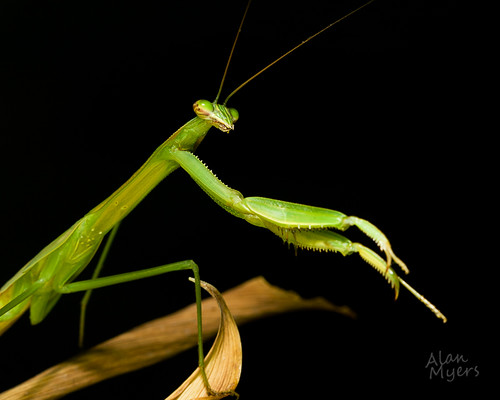Check out Software and Computer Support for Photographers section of our forum.
Micro photo
Jul 12, 2016 14:47:08 #
willdenise
Loc: Tennessee
Hello I have a nikon d750 and want to buy a micro lens I was thinking about the nikon 105 2.8 micro, can anyone tell me about a micro flash for this lens
Jul 12, 2016 14:53:51 #
willdenise wrote:
I would suggest posting your question in the "True Macro section". There various successful set ups used by many experienced macro photographers.Hello I have a nikon d750 and want to buy a micro lens I was thinking about the nikon 105 2.8 micro, can anyone tell me about a micro flash for this lens
Jul 12, 2016 16:35:38 #
Macronaut wrote:
I would suggest posting your question in the "True Macro section". There various successful set ups used by many experienced macro photographers.

Check out Astronomical Photography Forum section of our forum.
Jul 12, 2016 16:43:41 #
willdenise wrote:
Hello I have a nikon d750 and want to buy a micro lens I was thinking about the nikon 105 2.8 micro, can anyone tell me about a micro flash for this lens
What type of photography are you interested in? Nikon's 105 f/2.8 is a nice enough lens, though many would argue about it being the best choice for any purpose where a 105mm macro lens is suitable. For magnifications from perhaps 1:4 to 1:1, and where relatively short working distance is okay, 105mm is nice. Note that in many situation more working distance is nicer, and a good kit for general purpose needs is a 105mm macro lens with a 2X teleconverter.
But a flash for macro gets very difficult to specify as anything generic! Everyone uses a setup customized to the specific work they do. Some need portable, others high power, some very diffuse and others very directional. Some need special light modifiers and others none.
Just about the only value of the True Macro Section is a thread they have to show various macro setups. A great place to get ideas and see what others have used to solve specific problems.
Post as much discussion as you can of what kind of work you want to do. A studio setup? With a macro bench to get 10X magnification? Or a kit to take on 20 mile hikes? And are the subjects stationary, in motion, skittish and might flee or attack?
The more you narrow it down the better the answers will be, but rest assured at best they'll be all over the map.
Jul 13, 2016 06:50:14 #
willdenise wrote:
Hello I have a nikon d750 and want to buy a micro lens I was thinking about the nikon 105 2.8 micro, can anyone tell me about a micro flash for this lens
That's an excellent lens. If you're buying used, be aware that there are several different models.
Jul 13, 2016 06:57:14 #
willdenise wrote:
Hello I have a nikon d750 and want to buy a micro lens I was thinking about the nikon 105 2.8 micro, can anyone tell me about a micro flash for this lens
The best flash for macro work is a ring flash; they give no shadows as most certainly any one flash will have.
Jul 13, 2016 07:18:19 #
lalezo
Loc: Gainesville, FL
First of all ... the 105 Micro NIKOR is an outstanding lens ... for clinical photography I use a ring light for lighting using this lens. There are several available, depending onyour needs and budget. B&H Photo Video is a good source.
Lloyd
Lloyd
Check out Advice from the Pros section of our forum.
Jul 13, 2016 09:18:04 #
whitewolfowner wrote:
The best flash for macro work is a ring flash; they give no shadows as most certainly any one flash will have.
No shadows can be good in some situations, but in others, completely undesirable. Best to keep several lighting solutions at your disposal. Flowers in particular, with their texture and depth look pretty lame when shot with a ring light or macro light.
Jul 13, 2016 11:28:06 #
I own, use and love the Nikon 105/2.8D micro. I have no plans to upgrade. I have heard good things about the Sigma 180 Macro as well as the Nikon 200mm version, one of which I may purchase. As has been said, ringflash is the way to go with the Nikon being at the top of the pile. Best of luck.
Jul 13, 2016 11:46:47 #
willdenise --Actually, I have had excellent results with the old model AF Micro Nikkor 105 2.8 D and TC 201 extender. Light is excellent where I live, so I haven't used flash much, but experiments with a little Metz 24 AF 1 for Nikon on camera have worked quite well. I have only been working seriously with Macro for a few months, but have found it very enjoyable. Suggest you be guided by the True Macro folks, my only point, you can get into it very inexpensively -- my excellent used lens from Japan $325 with shipping, TC 201 $35.
I found the Macro shooting to be a valuable addition to my photographic "arsenal", and also influential on my regular photos.
I found the Macro shooting to be a valuable addition to my photographic "arsenal", and also influential on my regular photos.
Jul 13, 2016 12:05:33 #
whitewolfowner wrote:
The best flash for macro work is a ring flash; they give no shadows as most certainly any one flash will have.
Actually there are times when you want directional light and not just a flat boring light. So as others have said what is being photographed determines the light needed.
I frequently use my Canon 580 with good success.
Check out Digital Artistry section of our forum.
Jul 13, 2016 12:48:47 #
Here's a way to think about things like a ring light vs a point source. Imagine shooting a picture of a postage stamp. There is no texture to the surface, and flat even lighting is perfect: a ring light! But then slip the stamp out of the image and insert a quarter. Opps. All you want to see are the contours of the surface to make the engraving stand out, and an oblique point source light is the best. If a ring light is used for a coin just about all that shows up is the circle at the edge, assuming there is something to differentiate the coin from the background.
Flowers are a real problem that is exacerbated by the common practice of overexposing solid colors. A red flower shot with a ring light and overexposed looks like the most uninteresting flat surface possible.
Flowers are a real problem that is exacerbated by the common practice of overexposing solid colors. A red flower shot with a ring light and overexposed looks like the most uninteresting flat surface possible.
Jul 13, 2016 13:24:48 #
Jerry Green
Loc: Huntsville, AL
I use a Nikon SB900 with a Vello Mini Softbox Vello VE-1002 for nice diffused lighting.
Jul 13, 2016 14:15:46 #
willdenise wrote:
Hello I have a nikon d750 and want to buy a micro lens I was thinking about the nikon 105 2.8 micro, can anyone tell me about a micro flash for this lens
The new Nikon 105 Micro I believe is internal focus - which I like. So is the older 100mm Tokina IF.
Here is an image using the Tokina on a Sony A77II and using a pop-up flash diffuser like this - http://www.ebay.com/itm/141226951998?_trksid=p2060353.m1438.l2649&ssPageName=STRK%3AMEBIDX%3AIT
Jul 13, 2016 14:34:44 #
amfoto1
Loc: San Jose, Calif. USA
The Nikkor 105mm is an excellent macro lens and a good choice for general purpose.
There are both longer and shorter focal length macro lenses. The longer ones give you more working distance, but also shallow Depth of Field and are harder to hold steady. The shorter can give too little working distance for a lot of subjects.
Besides the 105mm Nikkor, around that focal length there are also Tamron 90mm (two versions), Tokina 100mm and Sigma 105mm macro lenses, all of which are pretty darned good, too.
As to flash, there are two types of specialized flash for macro purposes: dual flash or "twin lights" and ring lights.
Below are Canon examples, because that's what I shoot... but the same things or very similar are available for Nikon.
This is a Canon MR-14EX Ringlite on my MP-E 65mm macro lens:

The MP-E 65mm is an extra high magnification macro lens, no less than 1:1 and up to 5:1 (5X life size) magnification. It's pretty much the only lens I use the Ringlite with... I just don't care for the lighting effects that ring lights give on less than roughly 2:1 magnification. At less than that, ring light flash tend to make for a rather flat lighting, not a lot of shadows. That might be great for scientific, medical and forensic shots... But not great for anything where I'd like to have some nice modeling effect, with some shadows and highlights. The below image of a tiny, newly hatched snail was shot with the above rig, at about 3X life size and with the ring light flash set for maximum modeling effect, 8:1 lighting ratio between its left and right flash tubes.

For lower magnification shots, such as the 1:1 that's the maximum magnification possible with the Nikkor 105mm Micro lens and most macro lenses (unless additional accessories are used), I prefer to use a dual macro flash that gives a lot more control over flash head positioning and greater effective differences in shadow and highlights. This is the Canon MT-24EX Twinlite that I use...

The Twinlite is shown above with its two heads mounted on a Lepp/Stroboframe dual flash bracket, which allows a lot more flexibility positioning the heads than the standard mounting ring Canon provides, that clips onto the front of the lens. Here's the bracket itself (no longer made, but there are similar avail. from other manufacturers):

Both types of macro flashes are relatively low power, designed to be used close up without completely over-powering the subject with too strong light. They have limited use for anything other than macro purposes.
But, I sometimes don't have those specialized flashes with me and have found that a single, standard flash can also be used quite effectively. I nearly always have a standard flash handy. For close-up work with it, the trick is to diffuse it in some way to reduce the output and to be able to aim it toward the subject. Here is one of my Canon 580EX II flash attached to the camera with an off-camera-shoe-cord and with several layers of white gauze bandage over the head, held in place with a rubber band:

That gauze bandage over the head nicely holds back the flash output, at the same time it diffuses it for a more even effect. There are brackets available to mount the flash, with tilt to be able to aim it at close-up subjects. But I usually just hand hold it because that's quick and allows me maximum flexibility where I position the flash. All three of the macro shots below were done with a single flash used in this manner:



The two shots of the praying mantis are "full flash" used to make the background go completely dark (it was a distracting tangle of grass and branches). The closer of those mantis shots uses the flash held well off to the left hand side, to create stronger highlight and shadow effects. The second mantis shot was done with the flash more directly on, closer to the lens axis, for a lot less shadow modeling effects. The shot of the spider is "fill flash" with a strongly backlit subject, positioned rather directly. In all three shots, I just handheld the flash.
If the gauze bandage trick is too low tech and too "MacGuyvered" for you, there are diffusion accessories and mini softboxes available for use with many flashes that can serve the same purpose (I just like something that costs almost nothing, weighs very little and takes up minimal space in my camera bag... plus might be nice to have on hand if I ever get injured! )
)
Again, all the above are Canon examples and those flashes I'm using won't work properly with Nikon. But, I know similar are available for and possible with Nikon... both OEM products from Nikon themselves and other products from third party manufacturers.
Something else you might want to consider are continuous LED light sources. These are relatively new and are available in relatively small sizes that would be appropriate for macro work. Continuous lighting can be easier to use because what you see is literally what you get... Rather than the very fast burst from a flash, they give continuous light output. In the past, continuous lighting was done with "hot lights", that literally got hot and weren't usable for a lot of things. But LED are "cool lights", so don't have that problem. Might be worth looking into and could probably serve for video work, too, if you'll be doing any of that.
There are both longer and shorter focal length macro lenses. The longer ones give you more working distance, but also shallow Depth of Field and are harder to hold steady. The shorter can give too little working distance for a lot of subjects.
Besides the 105mm Nikkor, around that focal length there are also Tamron 90mm (two versions), Tokina 100mm and Sigma 105mm macro lenses, all of which are pretty darned good, too.
As to flash, there are two types of specialized flash for macro purposes: dual flash or "twin lights" and ring lights.
Below are Canon examples, because that's what I shoot... but the same things or very similar are available for Nikon.
This is a Canon MR-14EX Ringlite on my MP-E 65mm macro lens:

The MP-E 65mm is an extra high magnification macro lens, no less than 1:1 and up to 5:1 (5X life size) magnification. It's pretty much the only lens I use the Ringlite with... I just don't care for the lighting effects that ring lights give on less than roughly 2:1 magnification. At less than that, ring light flash tend to make for a rather flat lighting, not a lot of shadows. That might be great for scientific, medical and forensic shots... But not great for anything where I'd like to have some nice modeling effect, with some shadows and highlights. The below image of a tiny, newly hatched snail was shot with the above rig, at about 3X life size and with the ring light flash set for maximum modeling effect, 8:1 lighting ratio between its left and right flash tubes.

For lower magnification shots, such as the 1:1 that's the maximum magnification possible with the Nikkor 105mm Micro lens and most macro lenses (unless additional accessories are used), I prefer to use a dual macro flash that gives a lot more control over flash head positioning and greater effective differences in shadow and highlights. This is the Canon MT-24EX Twinlite that I use...

The Twinlite is shown above with its two heads mounted on a Lepp/Stroboframe dual flash bracket, which allows a lot more flexibility positioning the heads than the standard mounting ring Canon provides, that clips onto the front of the lens. Here's the bracket itself (no longer made, but there are similar avail. from other manufacturers):

Both types of macro flashes are relatively low power, designed to be used close up without completely over-powering the subject with too strong light. They have limited use for anything other than macro purposes.
But, I sometimes don't have those specialized flashes with me and have found that a single, standard flash can also be used quite effectively. I nearly always have a standard flash handy. For close-up work with it, the trick is to diffuse it in some way to reduce the output and to be able to aim it toward the subject. Here is one of my Canon 580EX II flash attached to the camera with an off-camera-shoe-cord and with several layers of white gauze bandage over the head, held in place with a rubber band:

That gauze bandage over the head nicely holds back the flash output, at the same time it diffuses it for a more even effect. There are brackets available to mount the flash, with tilt to be able to aim it at close-up subjects. But I usually just hand hold it because that's quick and allows me maximum flexibility where I position the flash. All three of the macro shots below were done with a single flash used in this manner:



The two shots of the praying mantis are "full flash" used to make the background go completely dark (it was a distracting tangle of grass and branches). The closer of those mantis shots uses the flash held well off to the left hand side, to create stronger highlight and shadow effects. The second mantis shot was done with the flash more directly on, closer to the lens axis, for a lot less shadow modeling effects. The shot of the spider is "fill flash" with a strongly backlit subject, positioned rather directly. In all three shots, I just handheld the flash.
If the gauze bandage trick is too low tech and too "MacGuyvered" for you, there are diffusion accessories and mini softboxes available for use with many flashes that can serve the same purpose (I just like something that costs almost nothing, weighs very little and takes up minimal space in my camera bag... plus might be nice to have on hand if I ever get injured!
 )
) Again, all the above are Canon examples and those flashes I'm using won't work properly with Nikon. But, I know similar are available for and possible with Nikon... both OEM products from Nikon themselves and other products from third party manufacturers.
Something else you might want to consider are continuous LED light sources. These are relatively new and are available in relatively small sizes that would be appropriate for macro work. Continuous lighting can be easier to use because what you see is literally what you get... Rather than the very fast burst from a flash, they give continuous light output. In the past, continuous lighting was done with "hot lights", that literally got hot and weren't usable for a lot of things. But LED are "cool lights", so don't have that problem. Might be worth looking into and could probably serve for video work, too, if you'll be doing any of that.
If you want to reply, then register here. Registration is free and your account is created instantly, so you can post right away.
Check out Film Photography section of our forum.









